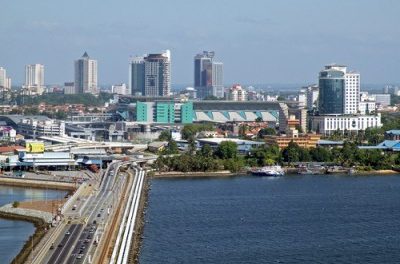Almost everybody knows what is a QR code these days, or at least have heard about it. You see it on flyers and banners, product labels and magazine advertisements. You use it for ticket-less entry into the cinema. Real estate agents on Estate123 have a custom QR code that links to their agent profile and property listings.
But what exactly is a QR code, and why is its monochrome footsteps everywhere?
QR code, short for “Quick Response Code”, is a type of matrix or 2-dimensional barcode that contains information. (Conventional barcodes are only one-dimensional.) It was invented in 1994 by a team of two developers at Denso Wave (Japan), and was first designed for the automotive industry in Japan, where the codes were used to track parts in vehicle manufacturing, allowing for high speed component scanning. QR codes are easily recognizable by their square, pixelated design, and monochrome (black & white) colour.
The QR Code system became popular outside the automotive industry due to its fast readability and greater storage capacity compared to standard barcodes, and its use is applied in product tracking, item identification, time tracking, document management, and general marketing. The most common usage of QR codes is in consumer advertising, which we often see in print advertisements and on product packaging. Typically, a smartphone with camera and QR reader app is used to scan the code, and decode it into its intended form, be it a URL for a website, e-ticket, login information, coupon, or simply a hidden message or clue.
Fun fact: A Japanese tombstone maker called Ishi no Koe (“Voice of the Stone”) sells tombstones with a QR code, which when scanned will lead to a virtual ‘shrine’ for the deceased.
Admittedly, QR codes are still not widely used in Malaysia, although there is the occasional brand campaign or competition which utilizes QR codes to link to a specific website or reveal hidden messages. However, there is still a lot of potential for usage of QR codes in marketing and business, as they can be displayed in places where space is limited (e.g. advertisements spots, name cards, product labels) and link users directly to information that is required. For example, the Estate123 website has a function that allows users (real estate agents) to generate a custom QR code to their profile and listings, which they print on name cards and share directly with potential clients.
Advantages:
- Can contain more data than barcodes
- Fast readability
- Able to maintain element of surprise (for marketing campaigns)
- No need to type out URLs
- Custom QR codes are easily generated
Disadvantages:
- Apple devices do not have a built-in app to scan QR codes (there are a lot of Apple users)
- No way to decipher QR codes without a QR reader
- Malicious QR codes may put your device and personal data at risk
Do we think that QR codes are here to stay? Definitely. Although their usage in Malaysia is limited, there is still a lot of potential for it to be an integral part of marketing, communications, entertainment, and even security.
Fun fact: Denso Wave owns the patent rights on QR codes, but has chosen not to enforce them.
References
Wikipedia: QR Code
QR code.com
iMedia Connection
MediaPost: QR Code Scans









